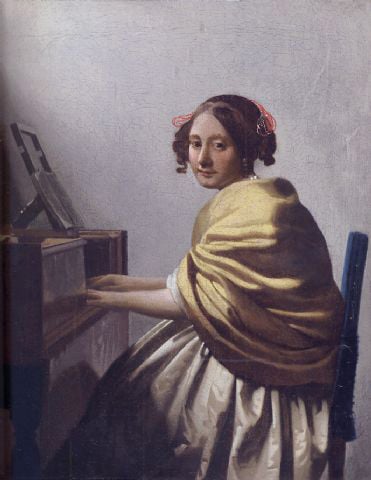One of the only two works by Johannes Vermeer that remain privately owned went under the hammer last night at Christie’s Old Masters sale. Yet, when the hammer fell, the result was far from the astronomical heights such rarity might suggest. Saint Praxedis (c. 1655) sold for £6,242,500 ($10.62 million), squeaking just inside the low end of it’s £6–8 million presale estimate.
Christie’s notes that last night’s result for the work marks the second highest prize ever paid for a Vermeer at auction. But, seeing as it’s only the second painting by the artist to be sold at auction, it’s also the lowest auction price ever achieved for a Vermeer.
So, what gives? On the macro level, the Old Masters market is far off its peak at the moment, with power collectors far preferring postwar and contemporary works. But, even still, given that the work was likely a once in a lifetime chance to own on of the mere 37 paintings attributed to the Delft master, above-the-estimate performance would have likely been expected.

Johannes Vermeer, A Young Woman Seated at the Virginal, c.1670, Photo: Sotheby’s London
The only other Vermeer to sell at auction A Young Woman Seated at the Virginals (1670) went for a considerably larger £16.25 million ($30.1 million) when sold at Sotheby’s London in 2004—and it was a quarter the size, according to the artnet Price Database. However, its provenance reaches back practically to Vermeer’s hand.
Saint Praxedis, on the other hand, which was consigned by the estate of Barbara Piasecka, has had a rocky time getting approved by experts. For years, they have debated over the work’s authenticity, despite the artist’s signature and date. It is possible that doubts lingered in the minds of bidders yesterday evening. Painted when the artist was only 23, it’s his earliest surviving piece, and thus doesn’t immediately jump out as a Vermeer.
But recent results to tests on a white pigment performed by the Rijksmuseum revealed the paint to be exactly the same as that which was used in another Vermeer, Diana and Her Companions. Saint Praxedis is the real deal.






